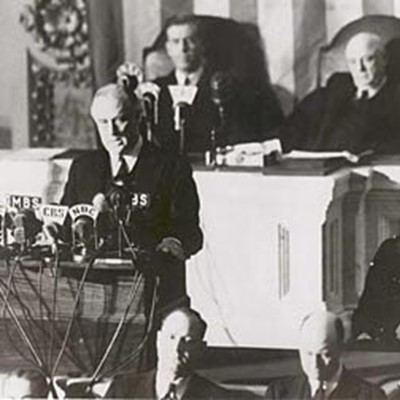
"Of 19 different types of smile, only six occur when we're having a good time."
– BBC article on smiling
Almost any public speaking training will encourage a presenter to smile, and our Buckley coaches do it, too.
A smile, after all, can show your pleasure to speak to an audience, help them feel connected to you, and create a warmer stage personae.
It can. But sometimes it doesn't.
And while an article for the BBC details the various types of smiles and the sinister messages they might send, there are three main observations we have about smiling—and what you should avoid in public speaking.
1. Make sure your smile doesn't become a permanent fixture.
A presenter's smile should flash on, then flash off—not appear and stay frozen on the face.
If that seems obvious to you, consider why a speaker might not naturally let this happen.
When we're speaking, we may feel we're under duress—and hope that plastering on a permanent smile can hide our stress.
Or, we may long to please the audience and ingratiate ourselves and we keep smiling in order to do that.
But a fixed smile loses its natural appeal fairly quickly. It starts to take on the look of a grimace, to seem pained.
So yes, smile. But turn it on AND turn it off. Then bring it back later, when the smile feels appropriate. That takes us to point number two…
2. Match your smile to the message you're communicating!
If you're delivering a grim bit of information, your smile can send the wrong message: The audience might believe you're happy to spoil their day, their year, their lives.
Facial expressions work best when they reflect the words you are saying. Facial expressions, in fact, can be a wonderful aid to audience understanding.
When expressions are appropriate to the message, they signal your commitment to what you're saying. They enhance that authenticity every speaker craves to project.
So avoid flashing the inappropriate smile by striving to have all of your facial expressions portray the meaning you want to send.
3. Find a smile that looks natural—and unforced—for you.
We always say that public speaking is the most personal of pursuits. What works brilliantly for one speaker may be a dud for another.
The same is true of your smile. Find your way to the smile that suits you.
At the school, for example, we've asked a large and imposing speaker to give us a smile in order to make himself seem less threatening. The man was not a naturally smiley public speaker, and his forced smile was downright scary.
But as we talked with him one-on-one, we noticed he was quick to smile in conversation. And it was delightful.
So rather than insist he "smile more," we started asking him to match his facial expressions to his message (see above). As he delivered lines that amused himself and the audience, he smiled with ease.
So if you believe smiling is not your thing, instead of standing in front of a mirror trying on 19 different smiles to find the least frightening grimace, look inside.
Ask yourself where in your message you want to express joy, delight, amusement. Then animate your face to reflect that. Chances are, a smile that's natural to you will emerge.
Learn More
Find the BBC article about the types of smiles and the psychology of each here.
For more on how to get past "smile more" to a better solution, find our tips here.
A smile isn't the only way to build audience rapport. Find some other techniques for rapport building here.






